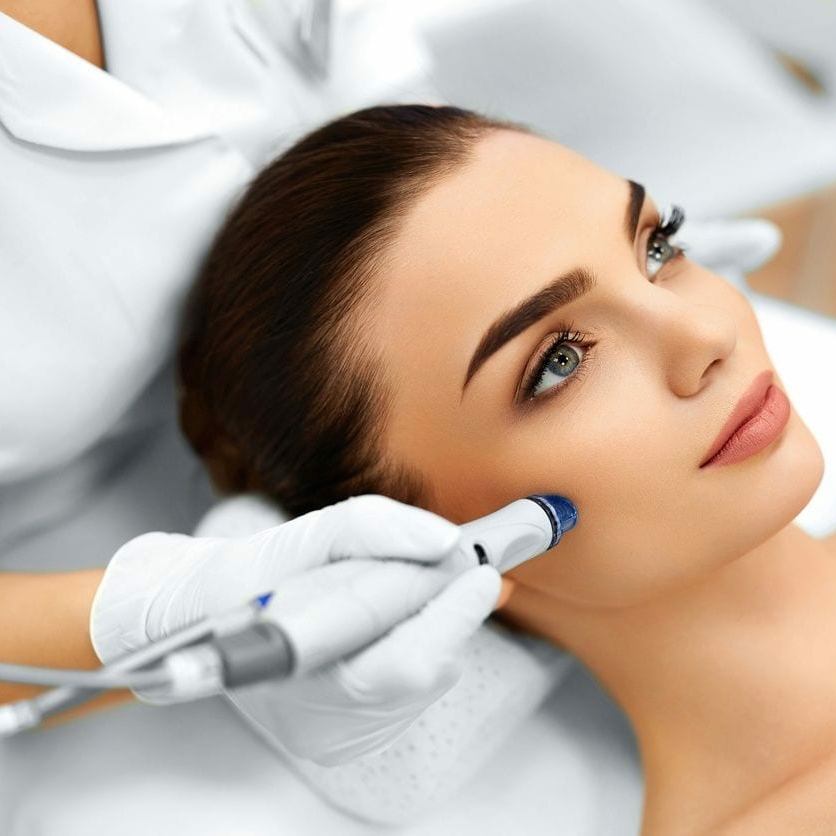Laser technology has revolutionized the field of dermatology, offering a wide range of treatments for various skin concerns and conditions. From skin rejuvenation to hair removal, lasers provide safe, effective, and non-invasive solutions that deliver impressive results. In this comprehensive guide, we’ll explore the different types of laser treatments available, their benefits, and how they can address specific skincare needs.
Understanding Laser Technology
Before delving into specific laser treatments, let’s start by understanding how laser technology works. Laser stands for “Light Amplification by Stimulated Emission of Radiation.” In dermatology, lasers emit concentrated beams of light that target specific chromophores (such as melanin or hemoglobin) in the skin, selectively heating and destroying unwanted cells or structures while minimizing damage to surrounding tissue.
Different types of lasers are designed to target specific skin concerns and conditions, ranging from pigmentation and vascular issues to unwanted hair and signs of aging. The choice of laser treatment depends on factors such as skin type, skin condition, treatment goals, and the expertise of the provider.
Types of Laser Treatments
- Laser Hair Removal: Laser hair removal is one of the most popular laser treatments, offering a long-lasting solution for unwanted hair on various areas of the body. The laser emits pulses of light that are absorbed by the melanin in the hair follicles, heating and damaging them to inhibit future hair growth. Laser hair removal is safe and effective for all skin types and can target large areas such as the legs, back, chest, and bikini line.
- Fractional Laser Resurfacing: Fractional laser resurfacing is a versatile treatment that addresses a range of skin concerns, including wrinkles, fine lines, acne scars, and uneven texture. The laser creates microthermal zones in the skin, stimulating collagen production and promoting skin renewal. Fractional laser resurfacing can improve skin tone, texture, and elasticity, resulting in smoother, firmer, and more youthful-looking skin.
- Intense Pulsed Light (IPL) Therapy: IPL therapy, also known as photofacial or photorejuvenation, uses broad-spectrum light to target pigment irregularities, redness, and vascular lesions in the skin. It can improve conditions such as sun damage, age spots, rosacea, and broken capillaries, resulting in a more even complexion and improved skin tone. IPL therapy is non-ablative and requires little to no downtime, making it a popular choice for skin rejuvenation.
- Q-Switched Laser for Pigmentation: Q-switched lasers emit high-intensity pulses of light in short bursts, targeting melanin in the skin to break up pigmentation and treat conditions such as freckles, sun spots, and melasma. These lasers are highly effective for removing unwanted pigmentation while minimizing damage to surrounding tissue. Multiple treatment sessions may be required to achieve optimal results, depending on the severity of the pigmentation.
- Nd:YAG Laser for Vascular Lesions: Nd:YAG lasers target hemoglobin in the blood vessels, making them ideal for treating vascular lesions such as spider veins, broken capillaries, and cherry angiomas. The laser delivers controlled heat to the targeted blood vessels, causing them to collapse and eventually fade from view. Nd:YAG laser treatments are safe and effective for all skin types and can improve the appearance of vascular lesions with minimal discomfort or downtime.
- CO2 Laser for Skin Resurfacing: CO2 lasers are ablative lasers that deliver precise beams of light to remove layers of damaged skin, stimulate collagen production, and promote skin renewal. CO2 laser resurfacing is effective for treating deep wrinkles, acne scars, and other signs of aging or sun damage. While CO2 laser treatments require a longer recovery period compared to non-ablative lasers, they offer dramatic results in skin rejuvenation.
Benefits of Laser Treatments
- Precision: Laser treatments target specific skin concerns with precision, delivering energy directly to the desired area while sparing surrounding tissue.
- Versatility: Laser technology offers a wide range of treatments for various skin concerns, allowing for customized solutions tailored to individual needs.
- Minimal Downtime: Many laser treatments require minimal downtime, allowing patients to resume their daily activities with little interruption.
- Long-lasting Results: Laser treatments often provide long-lasting results, with improvements in skin tone, texture, and appearance that can be maintained with proper skincare and sun protection.
Conclusion
Laser technology has revolutionized the field of dermatology, offering safe, effective, and non-invasive solutions for a wide range of skin concerns. From hair removal to skin rejuvenation, lasers provide targeted treatments that deliver impressive results with minimal discomfort and downtime. Whether you’re looking to address unwanted hair, pigmentation, wrinkles, or vascular lesions, there’s a laser treatment to suit your needs.
At Mirror Talks, we’re passionate about providing reliable information and resources to help individuals make informed decisions about their skincare journey. Explore our platform for more insights, tips, and recommendations on skincare, beauty, and wellness. Join our community and discover the beauty of healthy, radiant skin today!


